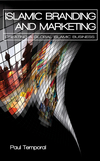
Islamic Branding and Marketing: Creating A Global Islamic Business
| List Price: | US $50.00 |
| Government Price: | US $32.00 |
Developing and managing brands for the fast-growing Muslim market
While many companies fall over themselves to court the markets of India and China, the global Muslim market remains relatively untapped, uncharted waters. This largest consumer market in the world currently comprises about 23 percent of the world’s population. With a projected growth rate of about 35 percent over the next 20 years, it is poised as a potential gold mine of opportunity because in 2030, if current trends prevail as projected, there will be 2.2 billion Muslims in the world, making up 26.4 percent of the world’s total forecasted population of 8.3 billion.
Dr. Paul Temporal’s new book, Islamic Branding and Marketing is required reading for any business leader helming an established company, starting up a new one or looking to grow an existing brand within the comparatively unfamiliar waters of the global Islamic market. The international speaker and leading global expert on brand strategy and management brings over 30 years of experience in consulting and training to the table in this groundbreaking book.
He sheds light on the hitherto mysterious world of Islamic business dynamics and the huge population of Islamic consumers who have been passed over by marketers from the Western world. He delves into Islamic values and culture and illustrates how these are inextricably linked to Islamic buying behaviour.
Over 30 case studies – including Brunei Halal Brand, Unilever, Nestle, Dubai Aluminium, Al Rajhi Bank and Godiva Chocolatier – provide practical applications of sophisticated strategies for developing and managing brands and businesses such that they provide lasting, meaningful value to the unique Muslim market. Temporal explains the importance of understanding the market clearly, building a brand based on Islamic values with universal emotional appeal and how to communicate the brand effectively to resonate with the Islamic context.
Islamic Branding and Marketing tackles often confounding issues such as what exactly Islamic branding and marketing is and explores the challenges facing companies crafting brands for these markets. It explains the intricacies of the global Muslim market structure and outlines key strategies non-Muslim companies can adopt to thrive in these markets. It also discusses if and how Islamic values can add to branding targeted at Muslim consumers and delves into the opportunities available in Islamic brand categories such as food and beverage, financial services, tourism and leisure, fashion, pharmaceuticals, media and digital products.
Finally, to further open up an understanding of the workings of the Islamic business world, the book includes an Executive Summary of Proceedings of the Inaugural Oxford Global Islamic Branding and Marketing Forum, held at the Saïd Business School, University of Oxford, in 2010.




